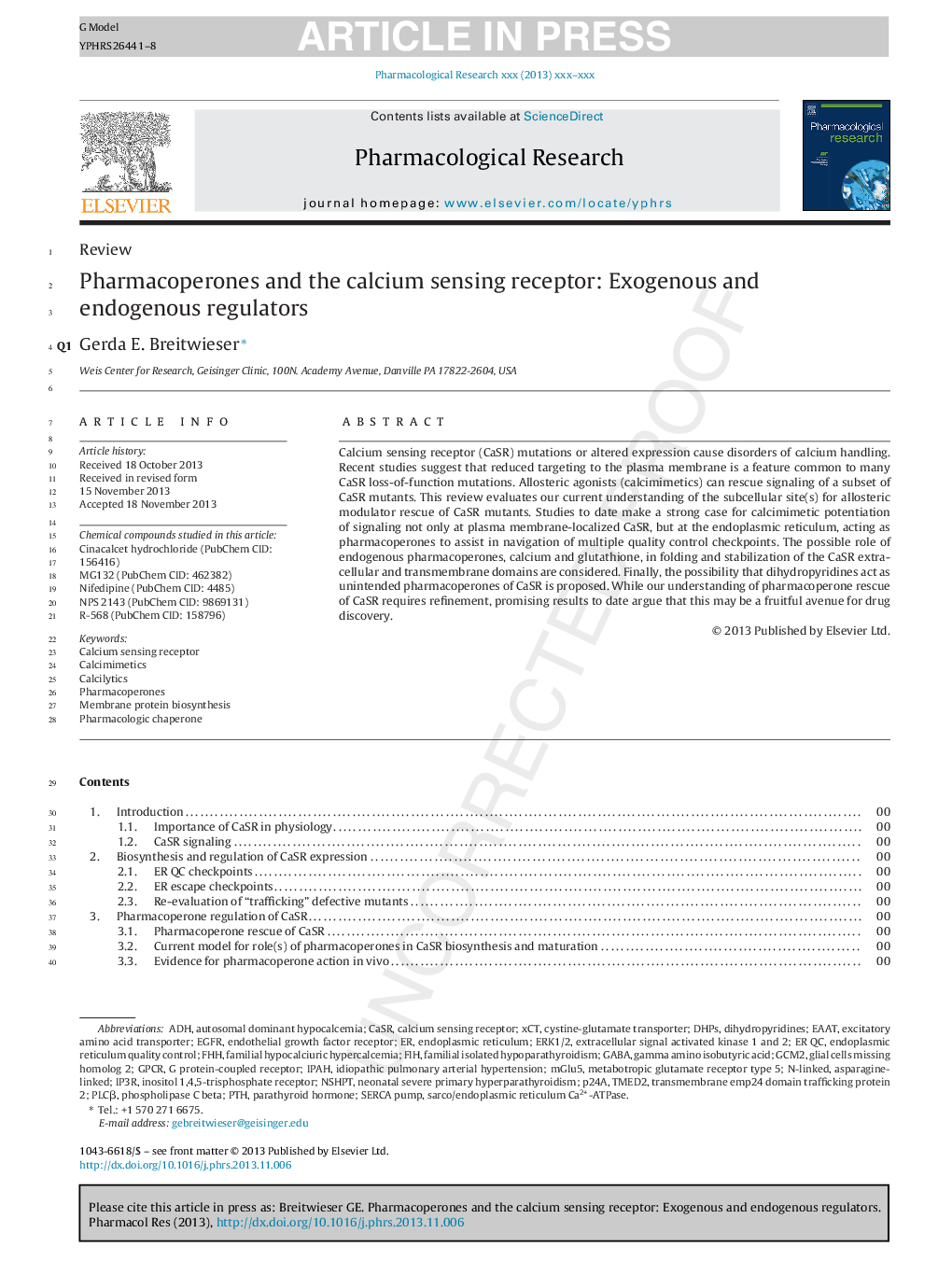| Article ID | Journal | Published Year | Pages | File Type |
|---|---|---|---|---|
| 5843631 | Pharmacological Research | 2014 | 8 Pages |
Abstract
Calcium sensing receptor (CaSR) mutations or altered expression cause disorders of calcium handling. Recent studies suggest that reduced targeting to the plasma membrane is a feature common to many CaSR loss-of-function mutations. Allosteric agonists (calcimimetics) can rescue signaling of a subset of CaSR mutants. This review evaluates our current understanding of the subcellular site(s) for allosteric modulator rescue of CaSR mutants. Studies to date make a strong case for calcimimetic potentiation of signaling not only at plasma membrane-localized CaSR, but at the endoplasmic reticulum, acting as pharmacoperones to assist in navigation of multiple quality control checkpoints. The possible role of endogenous pharmacoperones, calcium and glutathione, in folding and stabilization of the CaSR extracellular and transmembrane domains are considered. Finally, the possibility that dihydropyridines act as unintended pharmacoperones of CaSR is proposed. While our understanding of pharmacoperone rescue of CaSR requires refinement, promising results to date argue that this may be a fruitful avenue for drug discovery.
Keywords
EGFRendoplasmic reticulum quality controlmetabotropic glutamate receptor type 5N-LinkedADHGCM2Autosomal dominant hypocalcemiaGPCRxCTEAATIPAHIP3RCaSRFHHMglu5dhpsERK1/2excitatory amino acid transporterDihydropyridinesFIHendoplasmic reticulumFamilial hypocalciuric hypercalcemiaIdiopathic pulmonary arterial hypertensionGABAInositol 1,4,5-trisphosphate receptorCalcium sensing receptorendothelial growth factor receptorG protein-coupled receptor
Related Topics
Health Sciences
Pharmacology, Toxicology and Pharmaceutical Science
Pharmacology
Authors
Gerda E. Breitwieser,
